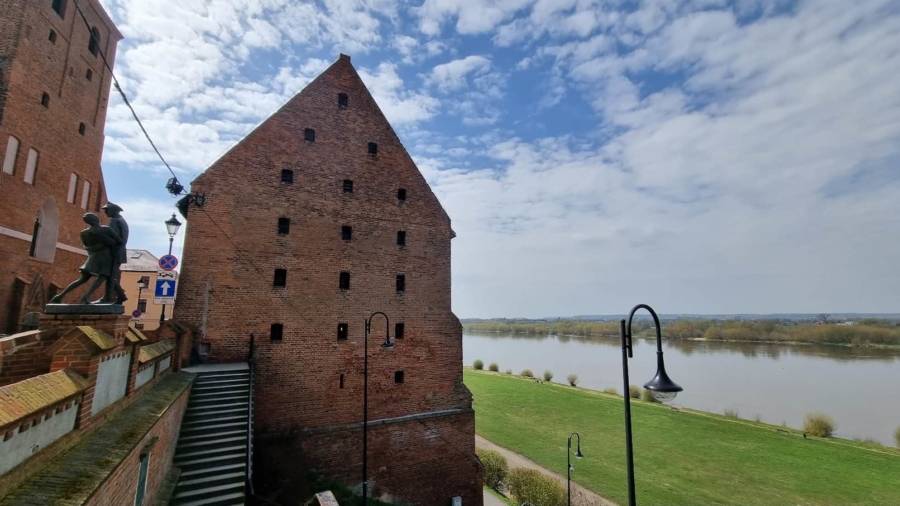I’m in the position to write about the main sights in Grudziądz courtesy of a two-day stay in the city at the end of April, 2023.
My wife and I stayed in Hotel ibis Styles for two nights. The hotel is but a ten-minute walk from the Main Square.
In our experience, one long April or summer’s day is enough to see all the main sights in Grudziądz. We made use of day two to visit Toruń by train. Moreover, we visited the quaint town of Chełmno on day three after checking out of the hotel.
Grudziądz in a nutshell
Grudziądz is situated in the northern part of Poland in the Kuyavian-Pomeranian region. It’s located on the right bank of the Vistula River.
With around 93,000 inhabitants, Grudziądz is the fourth-largest city in its voivodeship. Both the Old Town of Grudziądz and the 14th-century granaries, for which Grudziądz is famous for, hold the status of National Historic Monuments of Poland.
A Brief History of Grudziądz
The beginnings of the fortified town in the area of present-day Grudziądz date back to the 10th century. However, the first documented reference to Grudziądz was in 1065.
In 1231, the Teutonic Knights took over the city. Sixty years later, in 1291, Grudziądz obtained city rights.
The town was partially destroyed several times as a result of the invasions of the Pomeranian dukes (1242 and 1244), Prussians and Lithuanians (1278-1281). Construction of the castle was completed in 1299. Come the 14th century, the city was fortified with a powerful double wall along with 10 towers and four fortified gates. Moats were dug along part of the walls.
Taking advantage of its convenient location on the Vistula River, Grudziądz became a prominent centre of grain trade. The townspeople enjoyed numerous privileges granted by successive Teutonic masters. For instance, they could trade in cloth and shawls, meat, shoes, and junk. Over time, the city limits were extended, a bath house was built, and a beer tavern appeared in the town hall. In 1386, the construction of a canal supplying water and wooden waterworks began. Moving forward, 20 slaughterhouses came into operation in 1400. Crafts also developed successfully.
City councillors joined the anti-Teutonic Prussian Union in 1440. In 1454, at the beginning of the Thirteen Years’ War, the townspeople took over the castle, which was manned by a Polish garrison. Grudziądz became part of Poland in 1466.
Grudziądz post-1500
From the 16th to the 18th century, further development of the city was hampered by wars, plagues, floods and fires. The vicinity of rapidly developing neighbouring cities, especially Toruń, also impacted upon Grudziądz’s growth.
After being annexed by Prussia in 1772, Grudziądz assumed the character of a garrison town due to the mighty fortress built in 1776–1788. However, the city began to suffer as a result of the collapse of the Vistula trade. Moreover, additional damage was caused by a five-month siege by the French in 1806–1807.
Economic recovery came only in the second half of the 19th century. The boundaries of the city were significantly enlarged. New residential districts began to emerge. A river port and large industrial plants were established, including the Herzfeld-Victorius iron foundry and enamelling plant.
Grudziądz would soon benefit from railway connections with Toruń, Jabłonowo Pomorskie, Bydgoszcz, Królewiec, Tczew, Laskowice and Chełmża. In the years 1876–1878, a bridge over the Vistula was built. Expansion of the local military garrison and fortress continued.
Grudziądz played an important role in moulding Polish culture for the minority Polish population. From 1894, “Gazeta Grudziądzka” was published in Polish, reaching Poles living in all major towns in the Prussian (German) partition.
In 1920, Grudziądz found itself within the borders of Poland. Industry in the city thrived, while the training centre of the Polish Army (Garnizon Wojska Polskiego w Grudziądzu) also became prominent.
During World War II, when the city was captured by the Germans, many inhabitants were displaced and some were exterminated. In 1944, the Germans turned the city into a fortress. The Russians captured Grudziądz on March 6, 1945, after a siege which lasted one and a half months. Some 40% of buildings had already been destroyed by then.
Polish Kings in Grudziądz
Grudziądz was visited by Polish kings many times, including: Kazimierz Jagiellończyk, Zygmunt August, Stefan Batory, Zygmunt III Waza, Władysław IV, Jan III Sobieski. During the Polish-Swedish war (1655–1660), Grudziądz castle was the headquarters of Charles Gustav. In 1711, Peter I, the Emperor of Russia, lived there as well.
Heading towards the Old Town
My wife and I headed out of our hotel after breakfast to hunt down the main sights in Grudziądz.
We began our walk on Kosynierów Gdyńskich and hooked a left just before a stream which is actually a tributary of Lake Tarpno in the eastern part of Grudziądz. With the Roman Catholic Church of St. Immaculate Heart of the Blessed Virgin Mary towering over the stream, it’s actually quite a pretty spot to sit down on a bench and relax.
We eventually reached Mickiewicza Street where we turned right and proceeded towards the Old Town. On the way, we walked past the beautiful neo-Gothic building of the Polish Post Office, which was built in 1883:
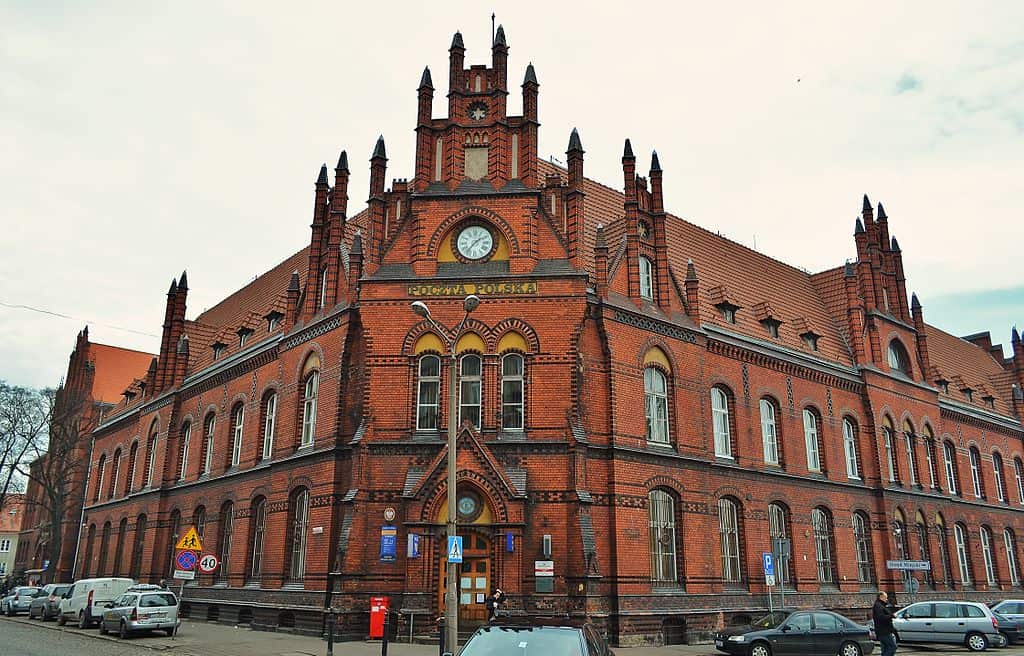
The Main Sights in Grudziądz
The western end of Mickiewicza Street practically runs on to the Main Market Square (Rynek Główny). This was where we began our walking tour of Grudziądz.
1. Main Market Square
After taking over the city, the Teutonic Order set about building the Large Market Square (Duży Rynek) between 1286 and 1300. Back then, wooden tenement houses, a Gothic town hall and a merchant’s house were constructed. Fires often broke out in Grudziądz due to the building material that was used. These fires would reach the main square, including the town hall which had to be rebuilt on several occasions.
The last seat of the city authorities with a half-timbered structure survived until 1851, when it was demolished by order of the Prussian authorities. In the mid-nineteenth century, the town hall was relocated to the western frontage of the Market Square. As a result of the building’s fire in 1893, the former Jesuit College became the seat of the Magistrate. From 1896, in the place of the former town hall, a luxury hotel and restaurant Królewski Dwór operated. As with the majority of buildings on the western and southern sides of the square, Królewski Dwór was destroyed during the war. In its place, four baroque-style tenement houses were erected.
You will find the Polish Soldier Monument (Pomnik Żołnierza Polskiego) in the centre of the square. Unveiled in October 1986, it was erected on the site of the Monument of Independence which the Germans destroyed in 1939.
Finally, it’s worth mentioning the trams which run along Długa Street past the eastern frontage of the Main Square. It’s an unusual, yet most charming and traditional, sight.
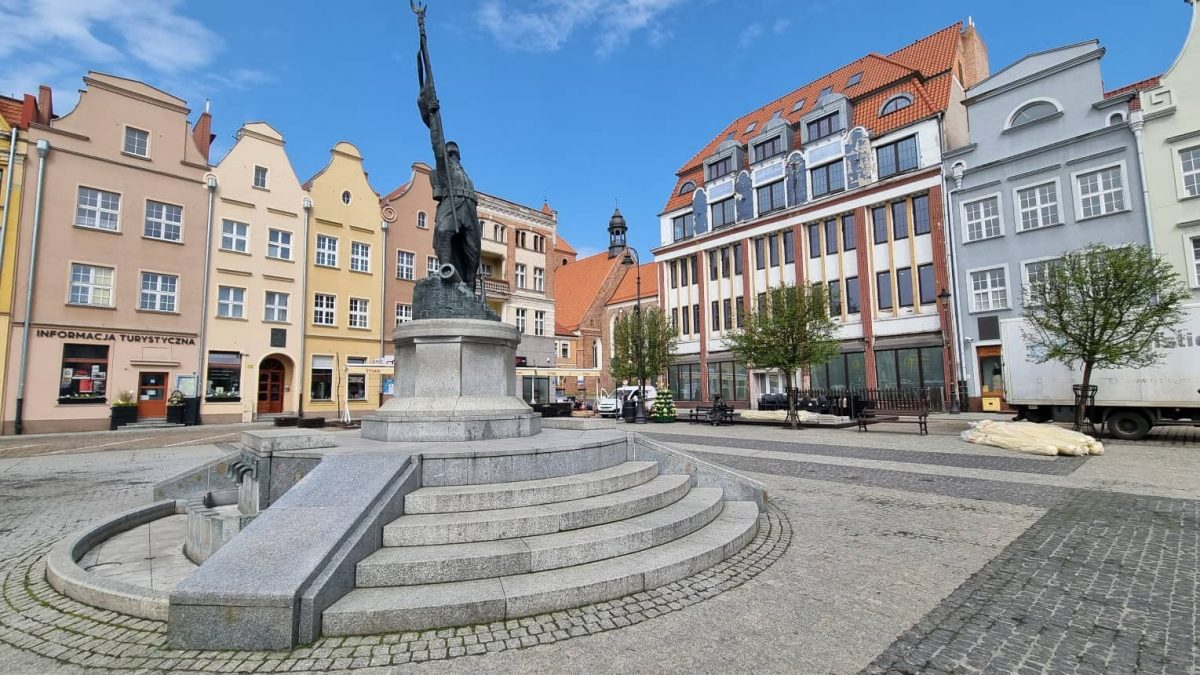
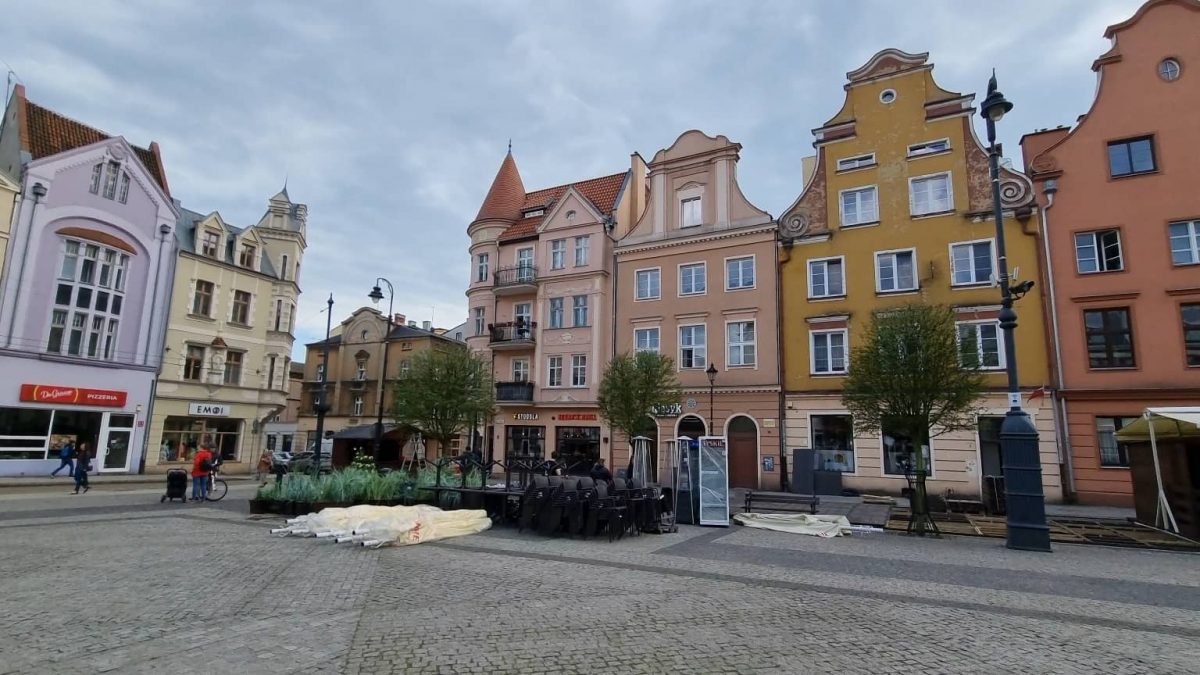
The Nicolaus Copernicus Bench
Grudziądz is one of 13 places in the Kuyavian-Pomeranian Voivodeship with which Nicolaus Copernicus (1473-1543) had connections. The so-called “Copernicus Trail” runs through towns related to the life and activity of the astronomer.
Copernicus was a keen student of the monetary economy. On March 21, 1522, at the Parliament of Royal Prussia in Grudziądz, Copernicus delivered one of his most important economic treatises on the subject of respecting money. Among other topics, he raised grave concerns about the production of counterfeit copies of coins.
Anyway, it wasn’t the first time I’d bumped into Copernicus sitting on a bench. I also spotted the famous scholar in Olsztyn gazing fondly at the fourteenth-century Olsztyn Castle. Copernicus is simply everywhere.
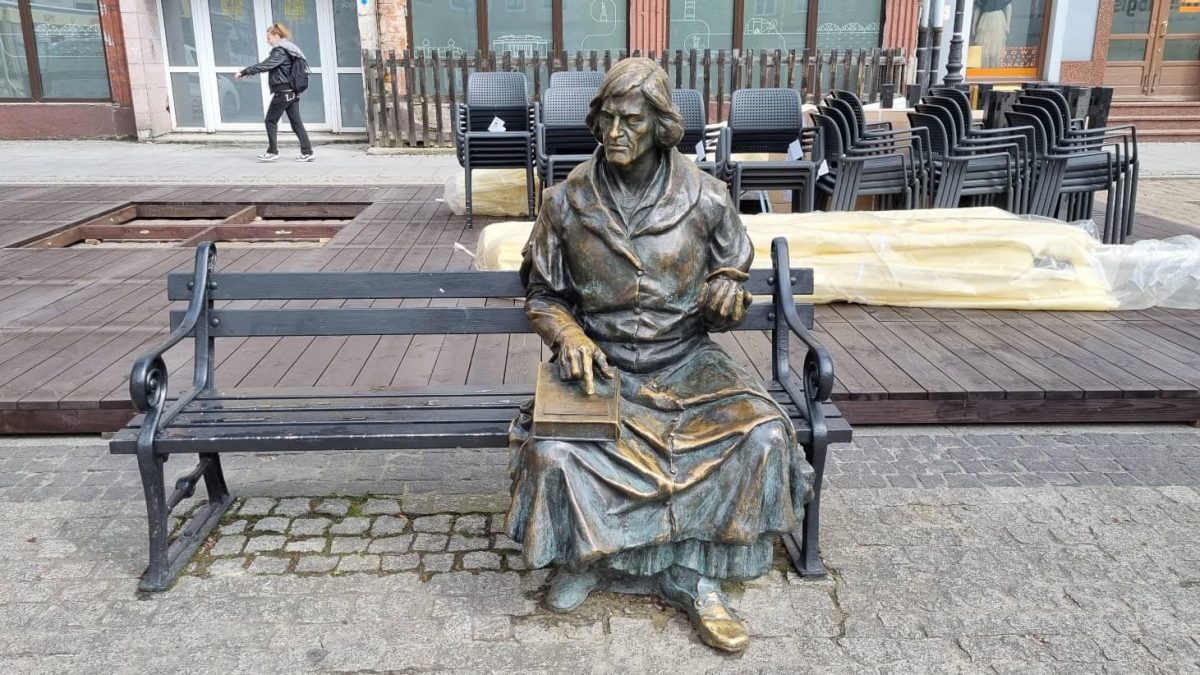
2. The Town Hall
100 metres or so north of the Main Square on Ratuszowa Street, you will find the Town Hall.
The current city government office was formerly The Jesuit College of Grudziądz. Funded by Chełmno voivode Jan Działyński, the college was built between 1647-1725 for Jesuits who arrived in the city.
This late-Gothic building, which was erected on a rectangular floor plan, boasts a tower in the main section with two protruding wings by the back elevation enclosing a courtyard.
The interior boasts late-Baroque polychrome with an illusionistic dome in the entrance hall and a refectory covered by a cloister vault with lunettes featuring rich stucco decoration from around 1720-1730.
In 1897, fire devastated the Town Hall on the Main Market Square. Since that disaster, the current building has served as the Town Hall.
All in all, the white facade contrasts very nicely with the surrounding red brick structures, most notably the Basilica of St. Nicholas and the former granaries on Spichrzowa Street.

3. The Uhlan and Girl Monument
A few metres away from the Town Hall, you won’t fail to notice the highly characteristic and intriguing “The Uhlan and girl Monument” (Pomnik ułana z dziewczyną w Grudziądzu, aka Ułan i dziewczyna).
Local artist, Ryszard Kaczor, is the author of the monument. Uhlans were a type of light cavalry, predominantly armed with a lance. Hence, the uhlan with a girl monument is a symbol which commemorates the activities of the pre-war Cavalry Training Center in Grudziądz. For years, it was the most important Polish training centre focused on cavalrymen. Nearly 1,100 officers graduated there.
Overall, there’s something about this monument which grabs your attention and makes you smile. Frankly, it deserves to be the symbol of Grudziądz. Finally, the spot with the monument is characterised by a vantage point from which you can observe the Vistula River.
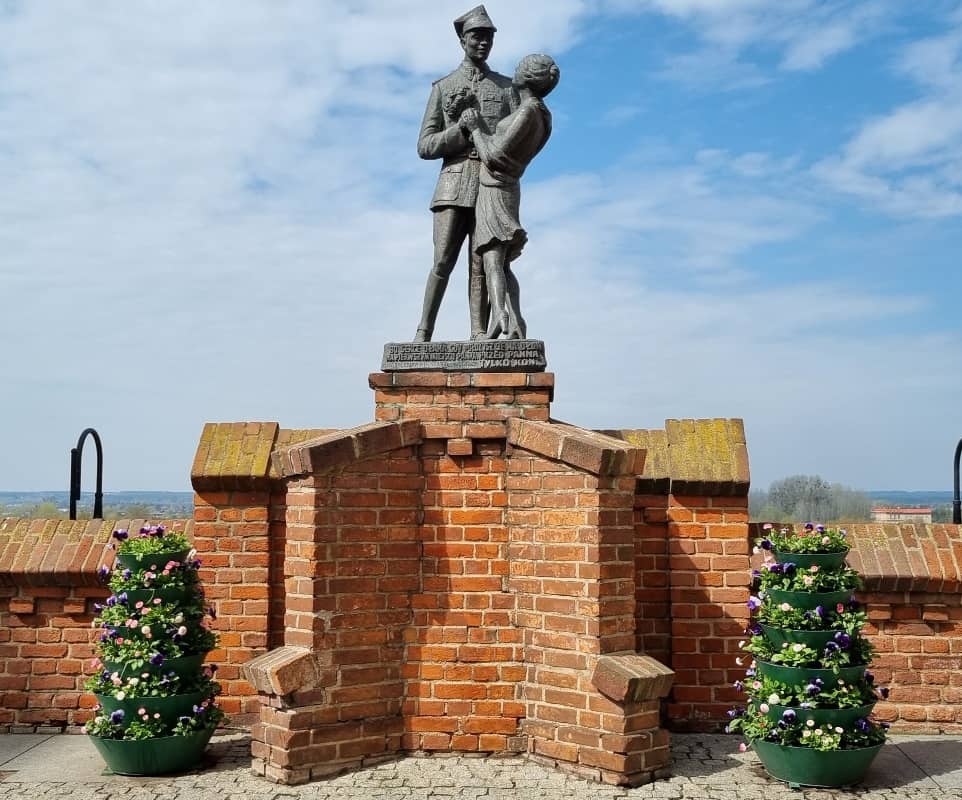
4. Spichrzowa and Zamkowa Streets – To feel the History of Grudziądz
Ulica Spichrzowa (Granary Street) runs seamlessly onto Ulica Zamkowa (Castle Street). The names of the streets themselves already reveal a great deal about the history which graces the two streets.
Let’s go back in time, beginning with the Water Gate, which is at the southern tip of Spichrzowa Street.
Water Gate
The Water Gate (Brama Wodna) was built at the beginning of the 14th century. It’s the only city gate preserved until the present day. It’s primary function was as a point of entry into the city and the castle from the harbour.
At night, the Water Gate was closed with a wooden iron-clad portcullis that defended access to the city. This portcullis is presently only decorative in function.
The Water Gate caught fire in both 1659 and in 1945. After World War II, it was thoroughly restored. It’s currently occupied by the city museum.
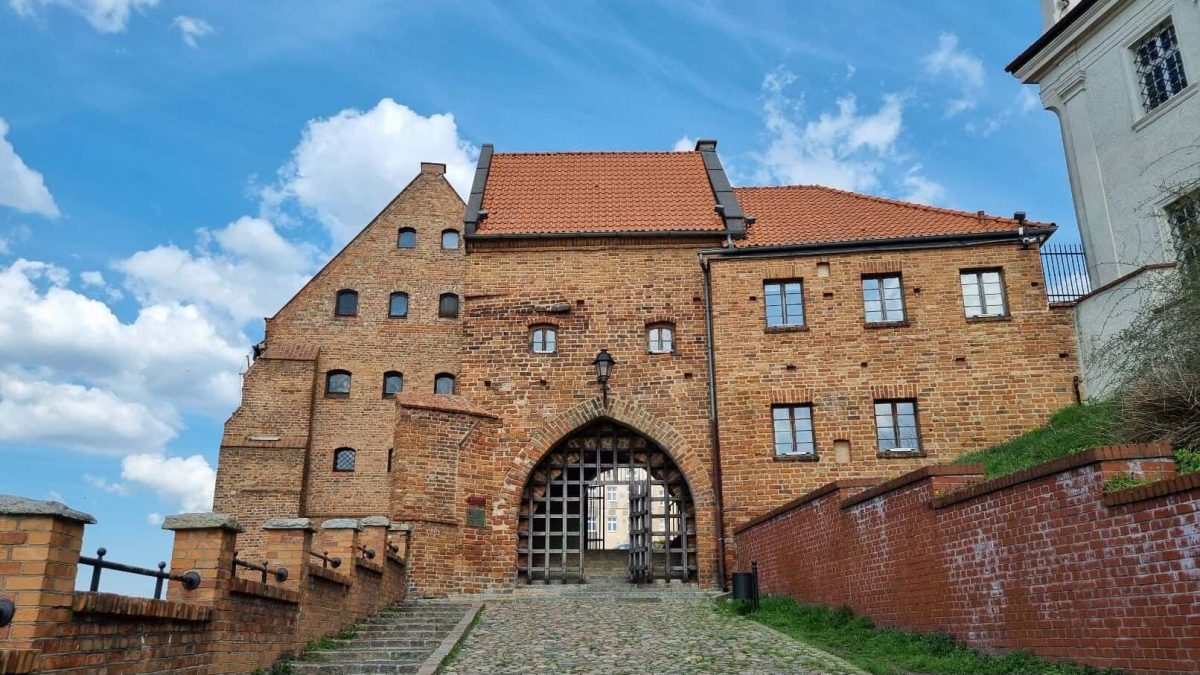
In the picture below, you can see the northern entrance to the Water Gate, with granaries on the right hand side:
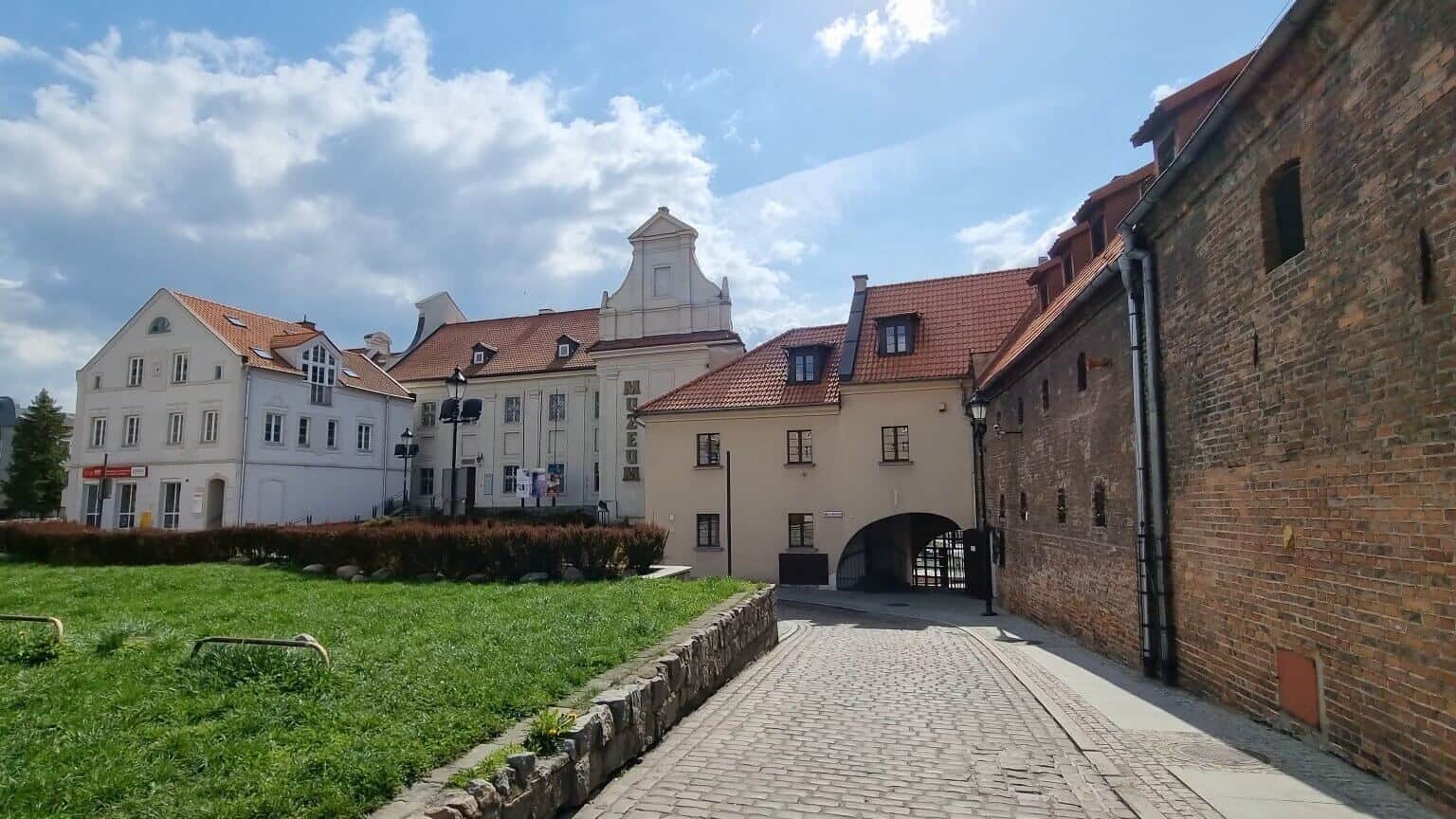
The Granaries of Grudziądz
Granaries in Grudziądz appeared thanks to the issuance of a special privilege by the National Master of Prussia, Meinhard von Querfurt, on June 18, 1291. This document enabled the town to obtain a trade permit.
According to the first estate census from 1504, there were fourteen granaries in Grudziądz, most of which were made of bricks. 100 years later, there were 16 of them. During the recapture of Grudziądz from the Swedes in 1659, many of the granaries burned down in a fire. The reconstruction of the granaries lasted until the 18th century, although two granaries situated by the Water Gate (Brama Wodna) were not rebuilt.
The granaries of Grudziądz, situated on a high embankment, are part of a unique panorama of the town which can be viewed from the Vistula riverside. Those on Spichrzowa Street have two or three floors. However, when observing the granaries from the riverside, it’s possible to see five or six storeys.
Check out the granary at number 9 Spichrzowa Street. The granary has been adapted into a museum. Currently, there are exhibition rooms on four floors:
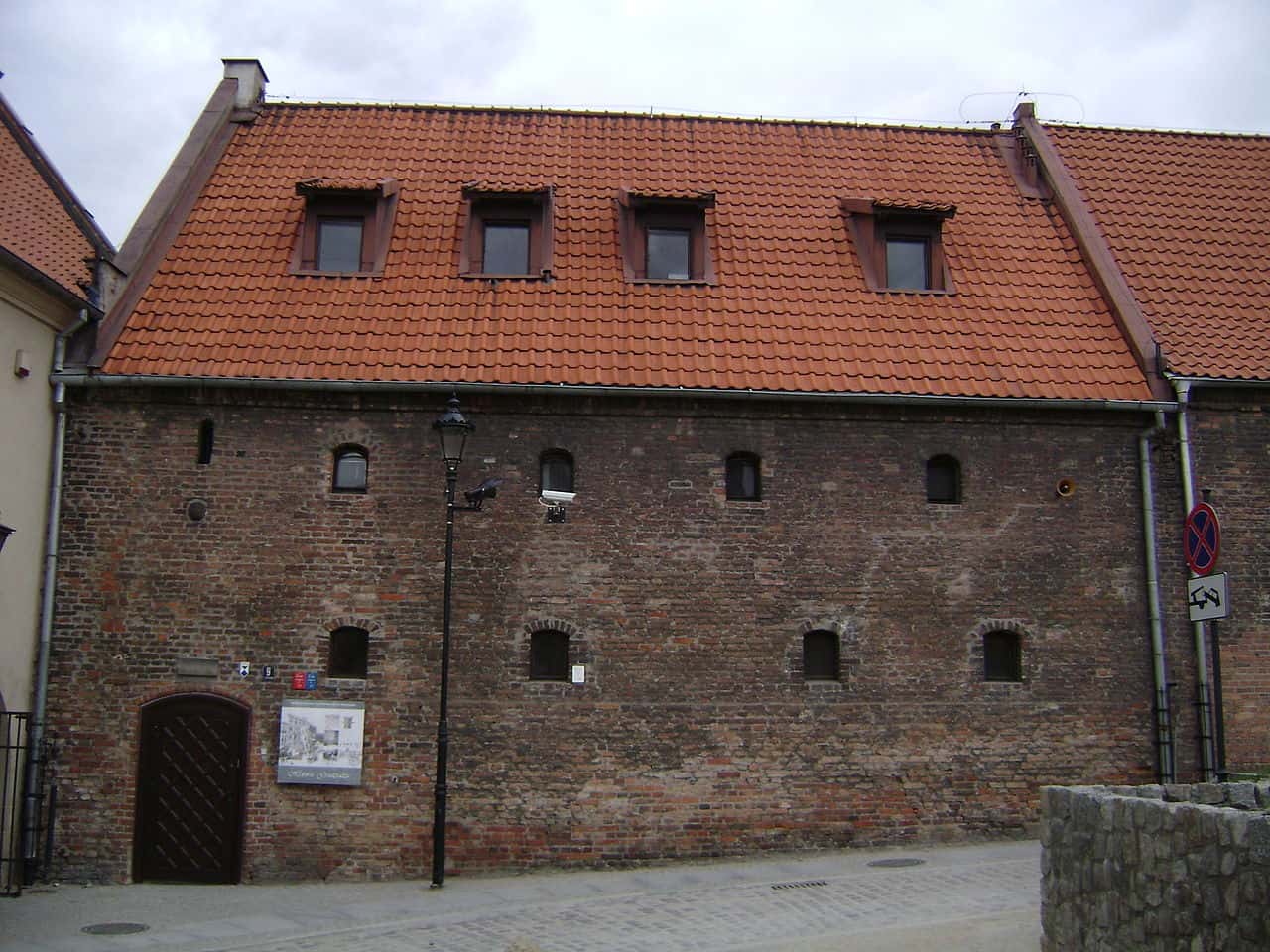
Have a look at the shot below from the riverside. The granary at 9 Spichrzowa Street is on the right-hand side:
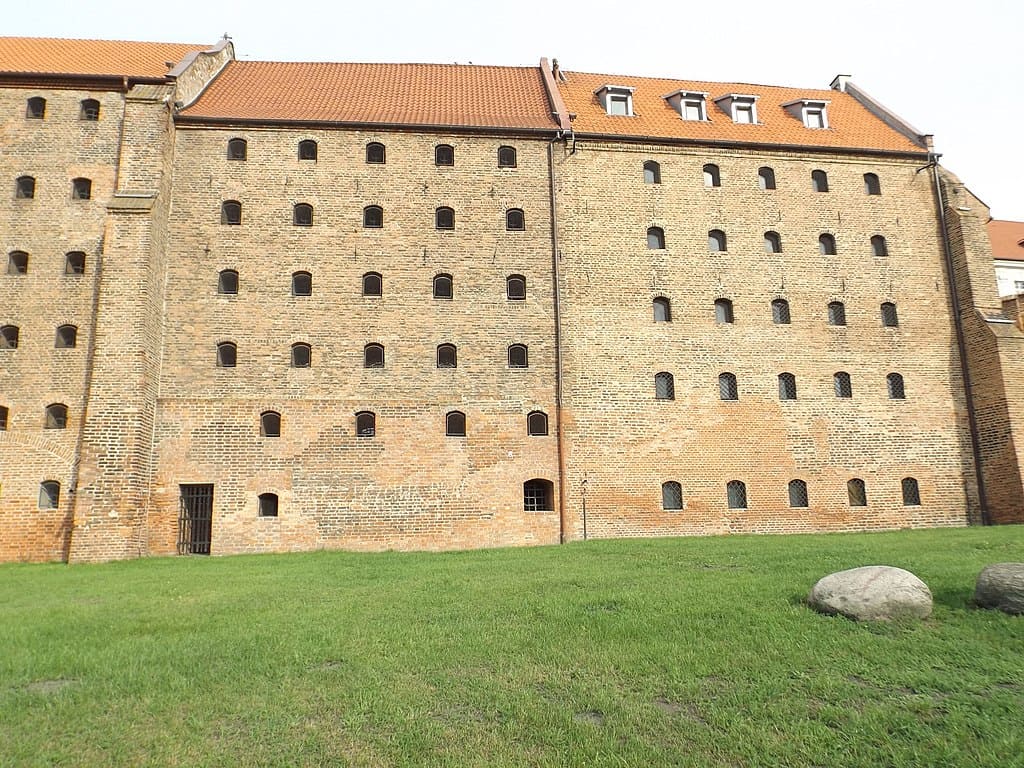
You can walk aleja Królowej Jadwigi, close to the Vistula Commons (Błonia Nadwiślańskie) and the Vistula River itself, to appreciate the rest of the granaries:
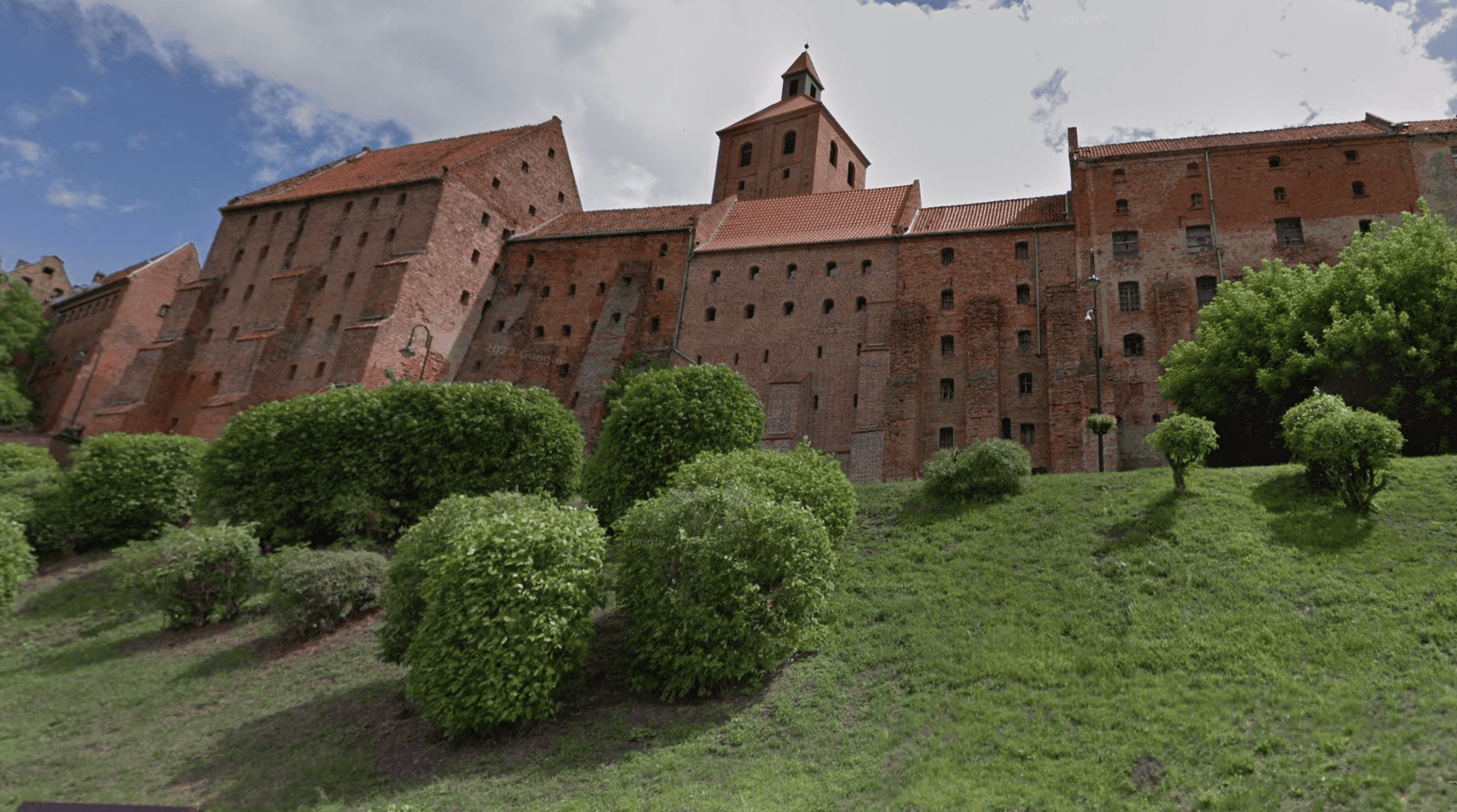
Here’s the granary at 53 Spichrzowa Street:
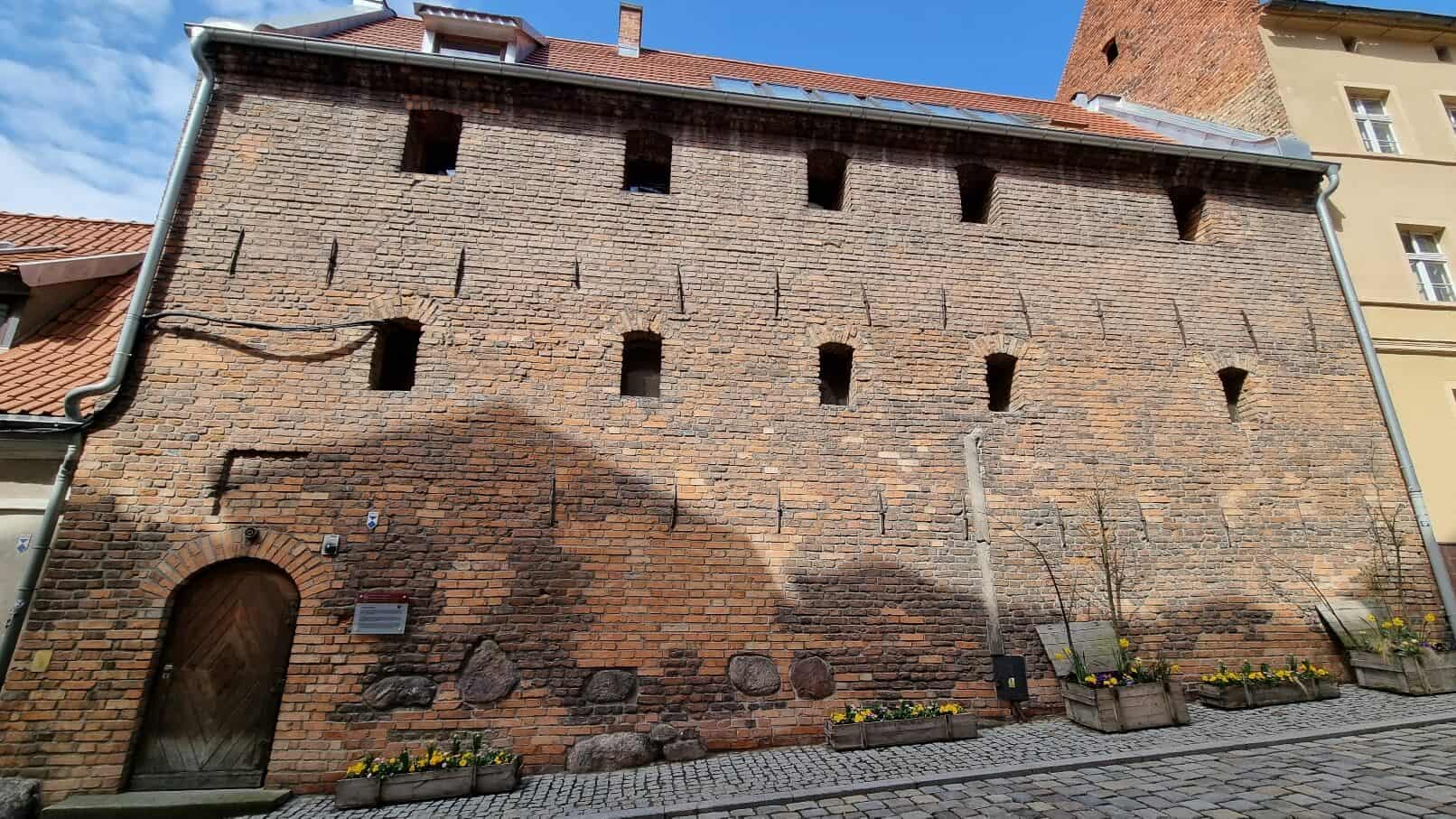
Castle Gate
The Castle Gate (Brama Zamkowa) is just below the granary at 53 Spichrzowa Street:

Defensive Walls
The enlarged rectangular-shaped area of the city was surrounded by a system of fortifications consisting of a line of defensive walls and a moat. This moat was connected in the north-western part with the previously erected fortifications of the Teutonic castle.
It is assumed that the first sections of the brick Gothic walls were erected at the beginning of the 14th century. Throughout the Middle Ages, the walls were raised and modified several times. They consisted mostly of a double line of walls with four defensive gates – Toruńska at Klasztorna Street from the south, Łasińska at Stara Street from the north, Wodna at Spichrzowa Street in the south-west corner and Boczna at Mickiewicza Street from the east. In addition, there was the Castle Gate which connected both defensive organisms.
In the 14th century, a single wall on the edge of the escarpment from the side of the Vistula River was gradually replaced by a line of defensive multi-storey granaries.
Finally, ten defensive towers were erected within the walls.

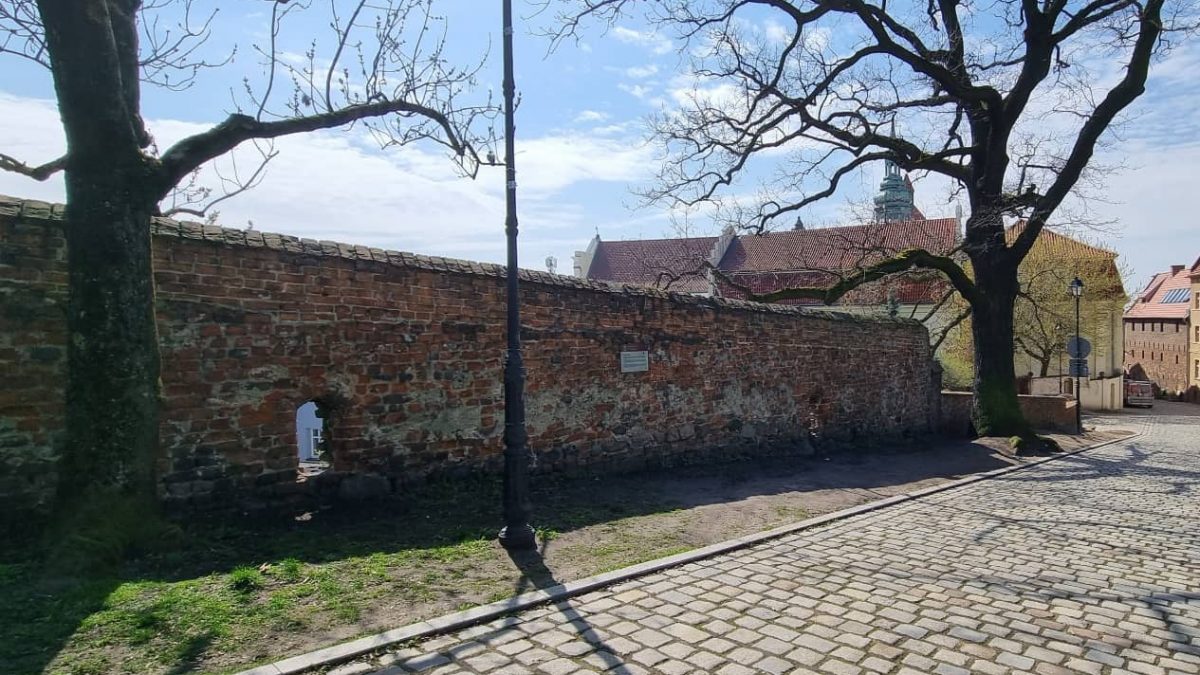
5. Grudziądz Castle Ruins and Klimek Tower
If you carry on walking up Zamkowa Street, you will eventually reach the ruins of Grudziądz Castle.
The brick Teutonic Castle was built in the Gothic style on a hill. Construction began in the 1260s. It was 170 metres long, roughly 70 metres wide, and rose about metres above the Vistula River.
The entire complex consisted of a conventual high castle and two baileys. These were the upper one from the southern side, which separated the castle from the town, and the lower one from the eastern and northern sides.
Among the relics of the castle are the Zwinger (an open kill zone area between two defensive walls that is used for defensive purposes) with the Komtur’s (local Teutonic commander’s) House, the remains of the cellars in the castle’s southern wing and sections of a room with a staircase (the western section of the southern wing). Certain sections of the northern wing, including the sewage canal, have also been preserved.
The southern wing was the main wing of the castle and its oldest element. It was most likely built in the 1260s or 1270s.
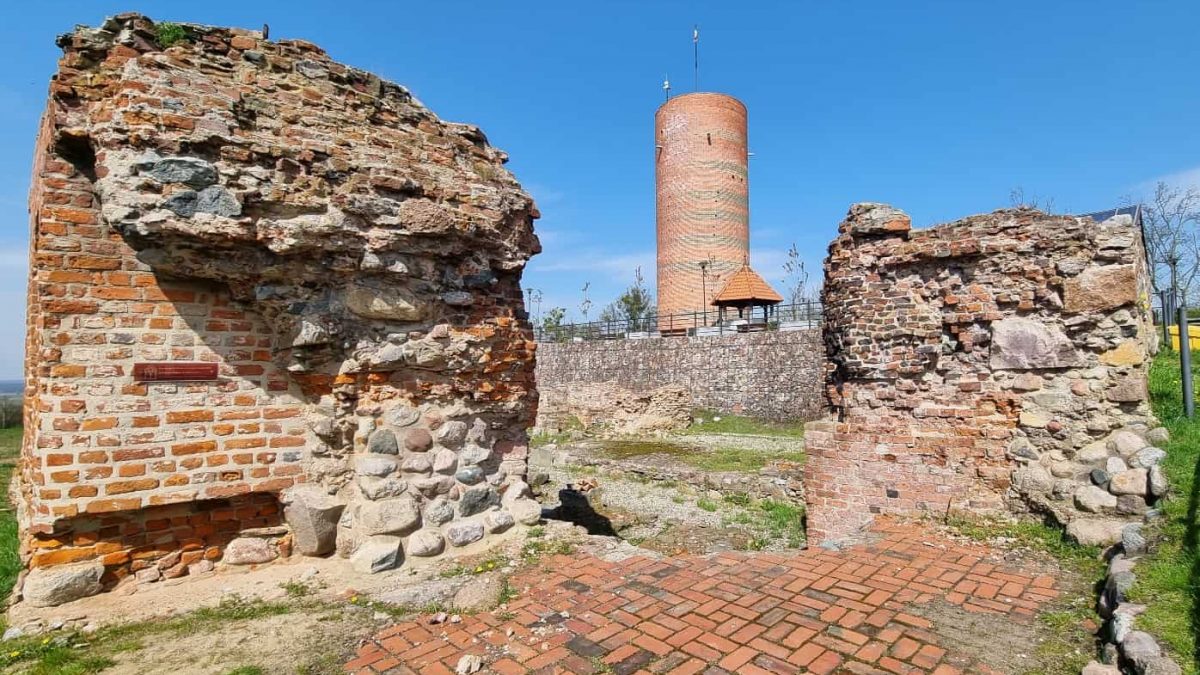

Anyway, to see more of the ruins and Grudziądz itself, check out this video:
Klimek Tower
Situated in the north-western wing of the castle was a high-cylinder shaped defensive tower called Klimek. Built in the second half of the thirteenth century, it was 30 metres tall and was accessed from the walls at half height through a drawbridge.
In addition to serving as a place of final defence, Klimek Tower also served as a prison. In the ground-level part of the tower there was a dungeon and two solitary confinement units.
German troops blew up Klimek Tower on March 5, 1945. In 2014, an observation tower, which was modelled on the former Klimek castle tower, was built. The tower is 23 metres high above ground level.
Klimek Tower is undoubtedly one of the main sights in Grudziądz. It’s free to climb up to the viewing platform to catch some amazing panoramic views. Apart from offering a picturesque view of Grudziądz and the Vistula valley, you can see the towers of churches in Chełmno (30 km away) on a clear day.
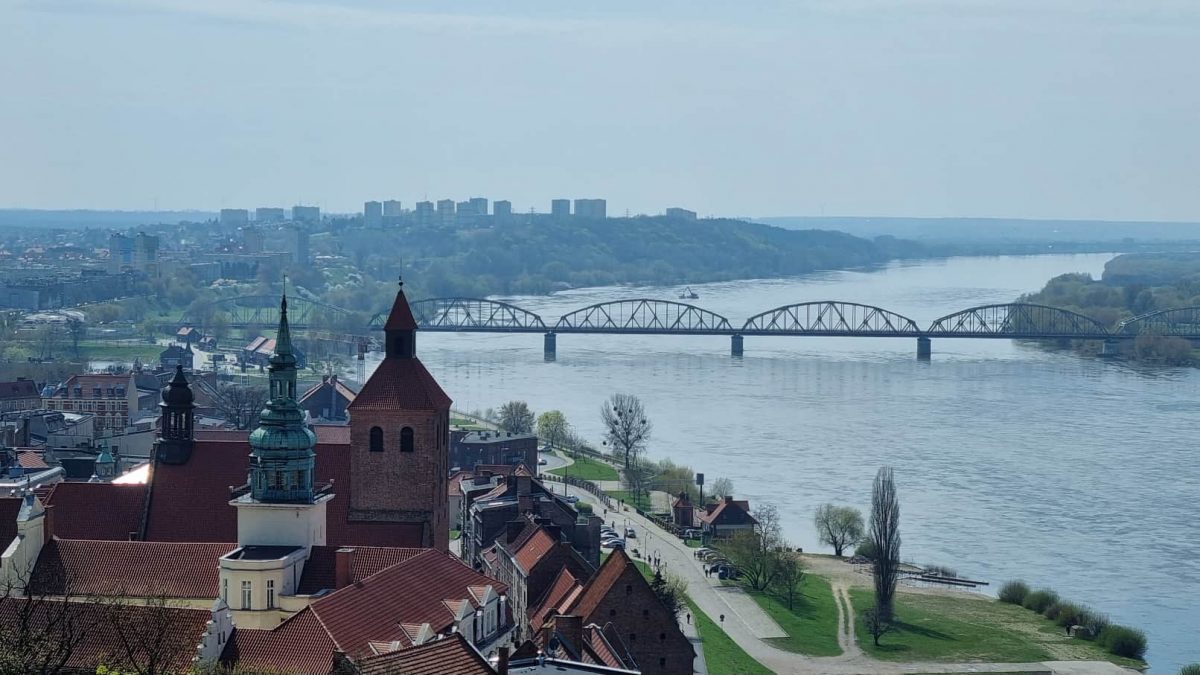
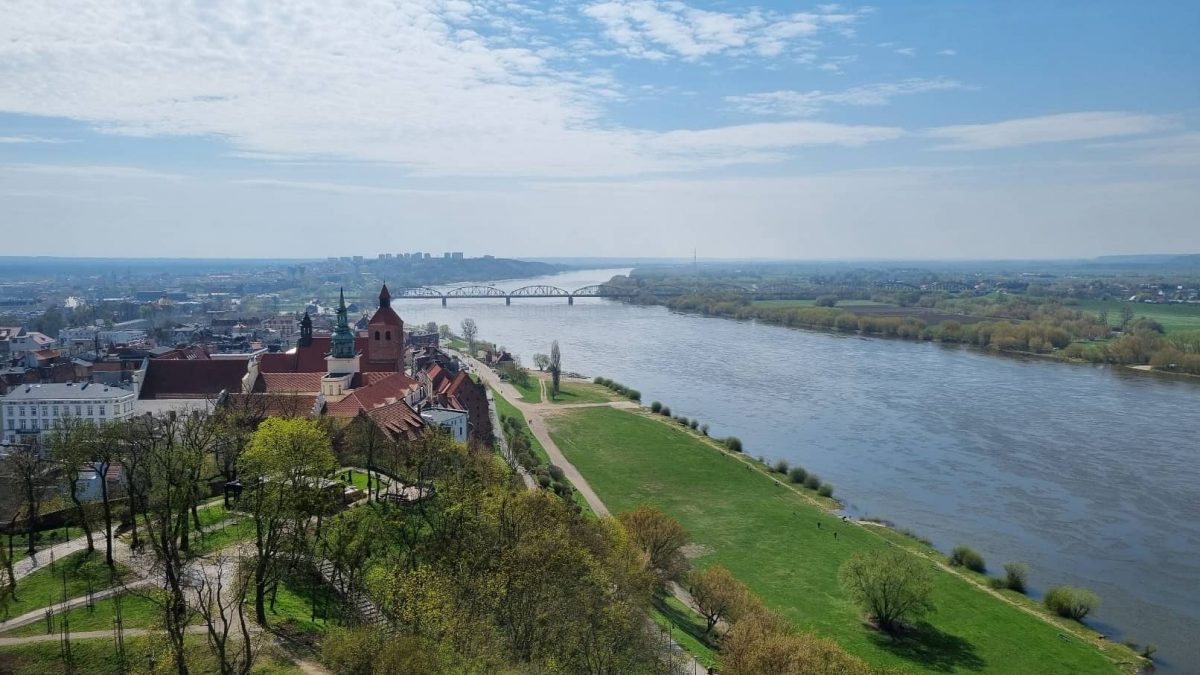
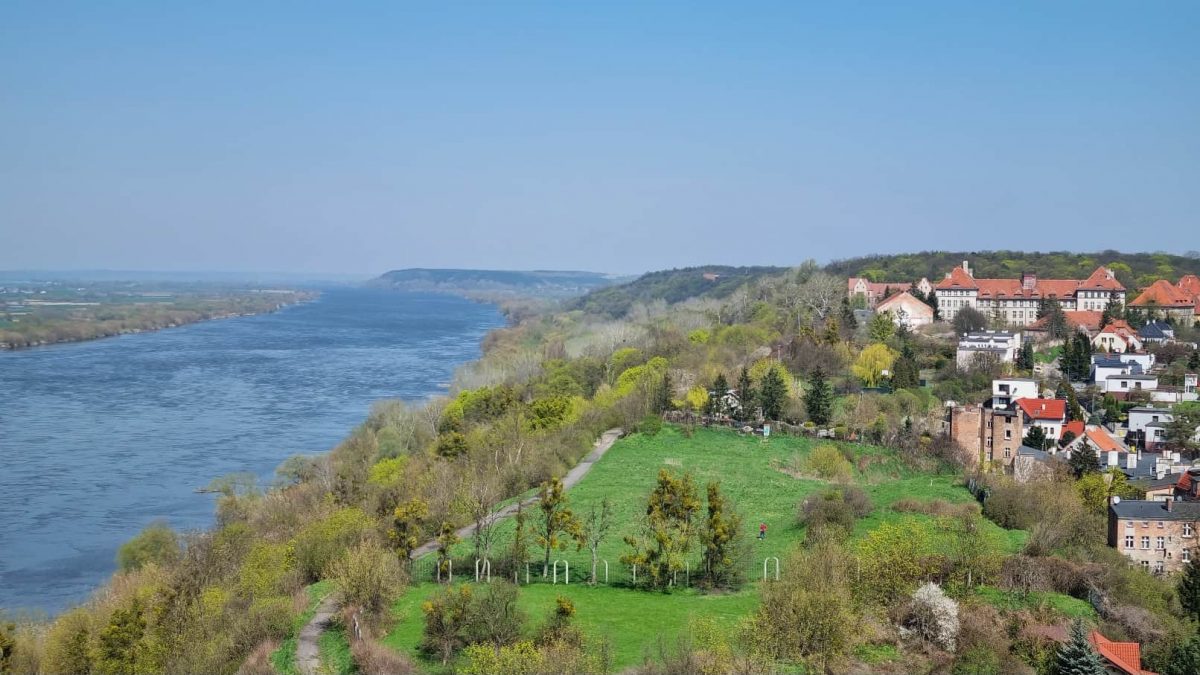
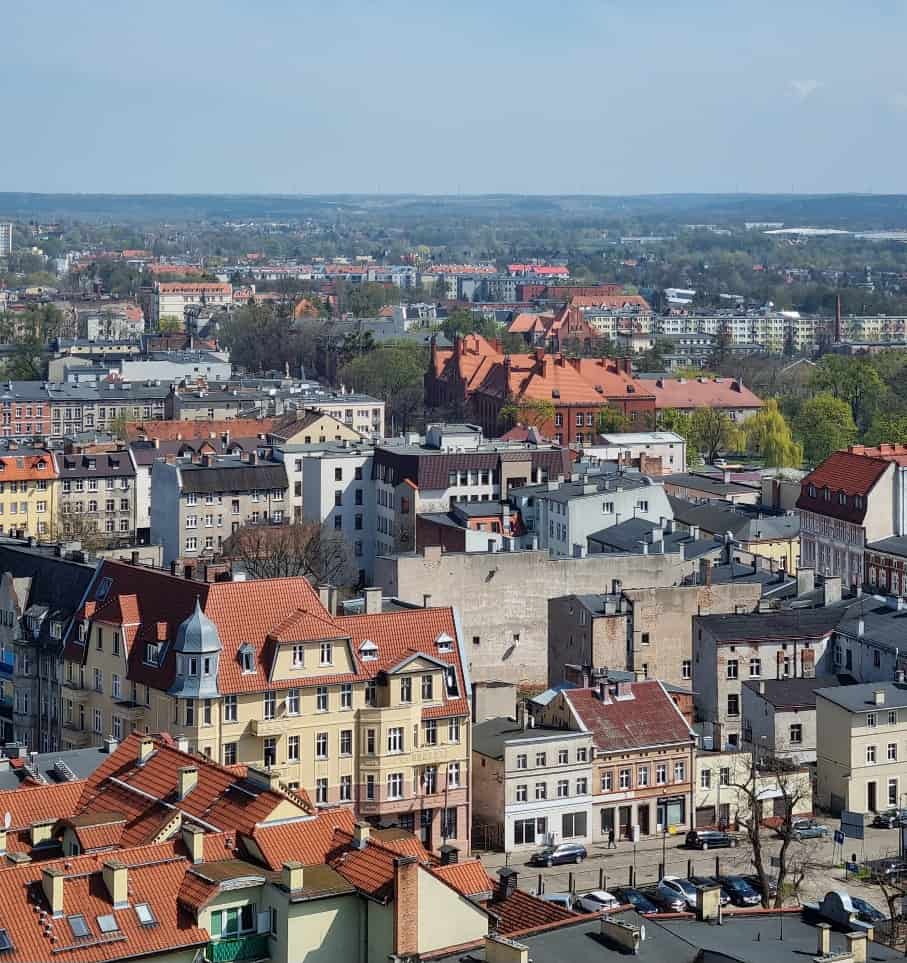
6. The Colourful Umbrellas on Mikołaja Reja Street
After seeing the castle ruins and Klimek Tower, we walked back down Zamkowa and Spichrzowa Streets.
It’s fair to say that colourful umbrellas hanging above Mikołaja Reja Street caught our eye. On what is a narrow street with cafes on both sides, the presence of these umbrellas adds a great deal of charm and colour to both the street and Grudziądz as a whole:
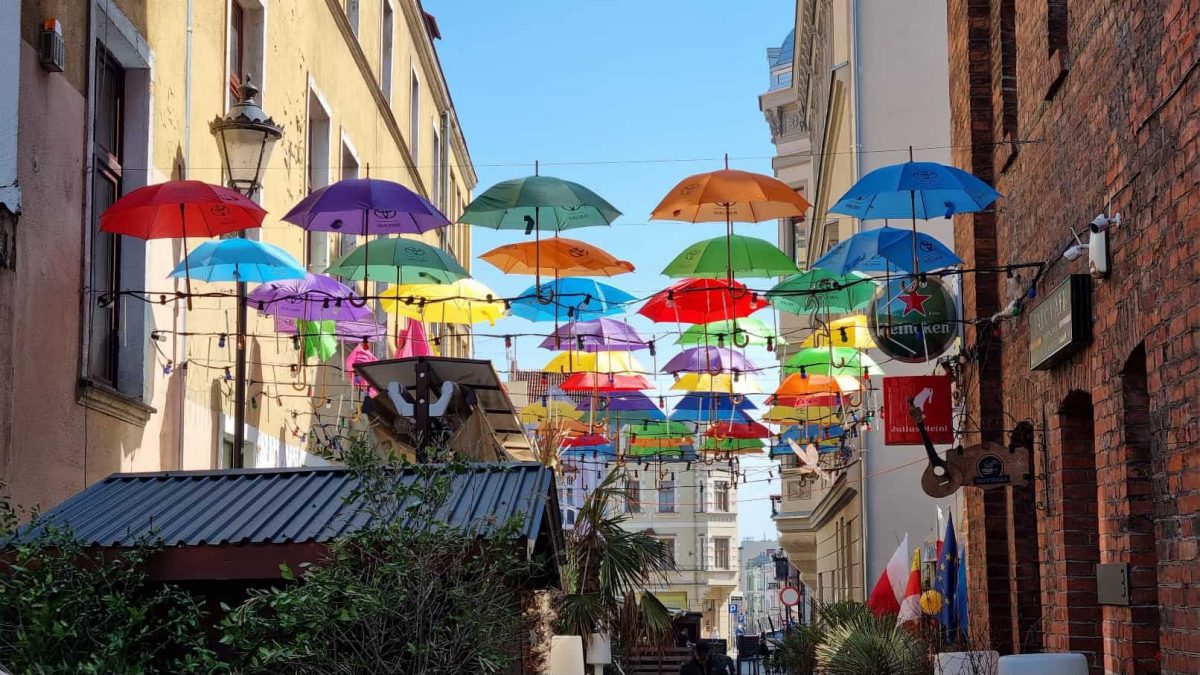
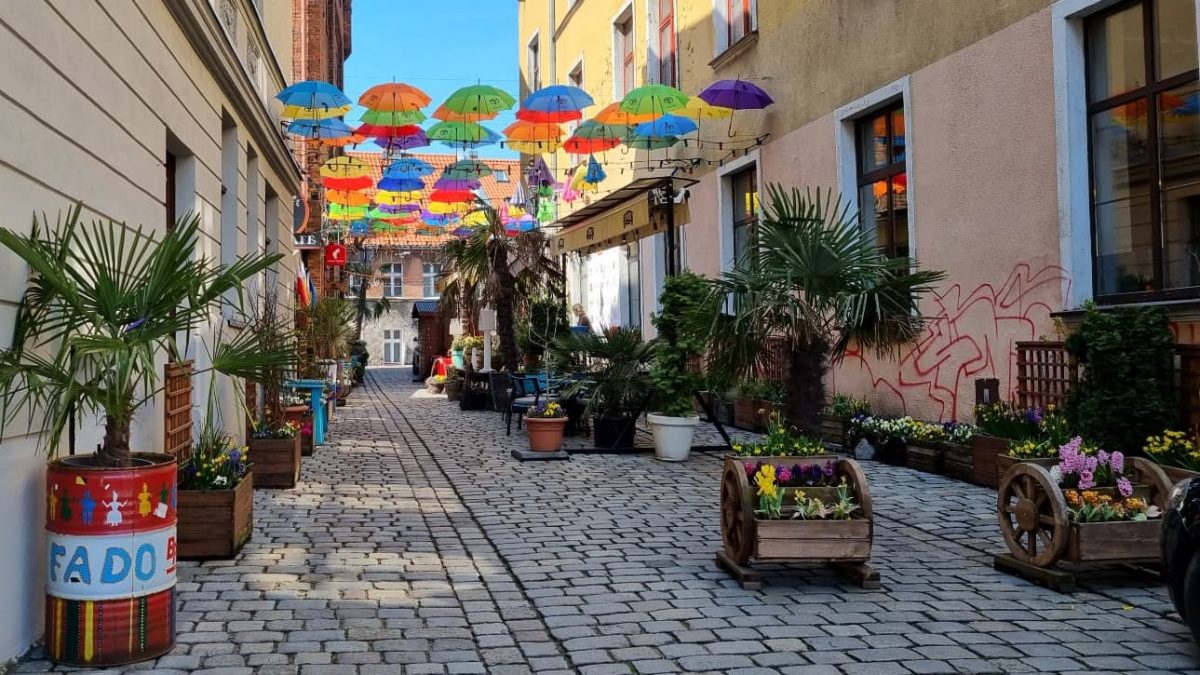
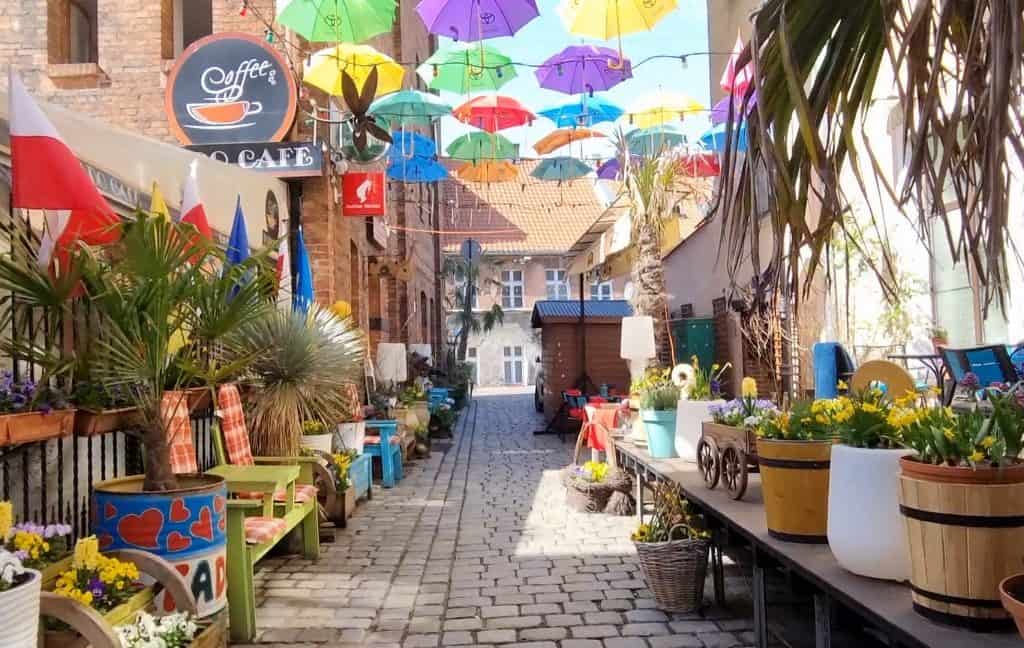
7. Statue of a Raftsman
Just a short walk down the hill from the Water Gate, there is a statue of a raftsman (Pomnik Flisaka). Obviously, this is a profession that has completely disappeared so it’s a true memento of bygone times.
The statue symbolises the bond between Grudziądz with the Vistula River and, of course, its inhabitants, who made a living from fishing.
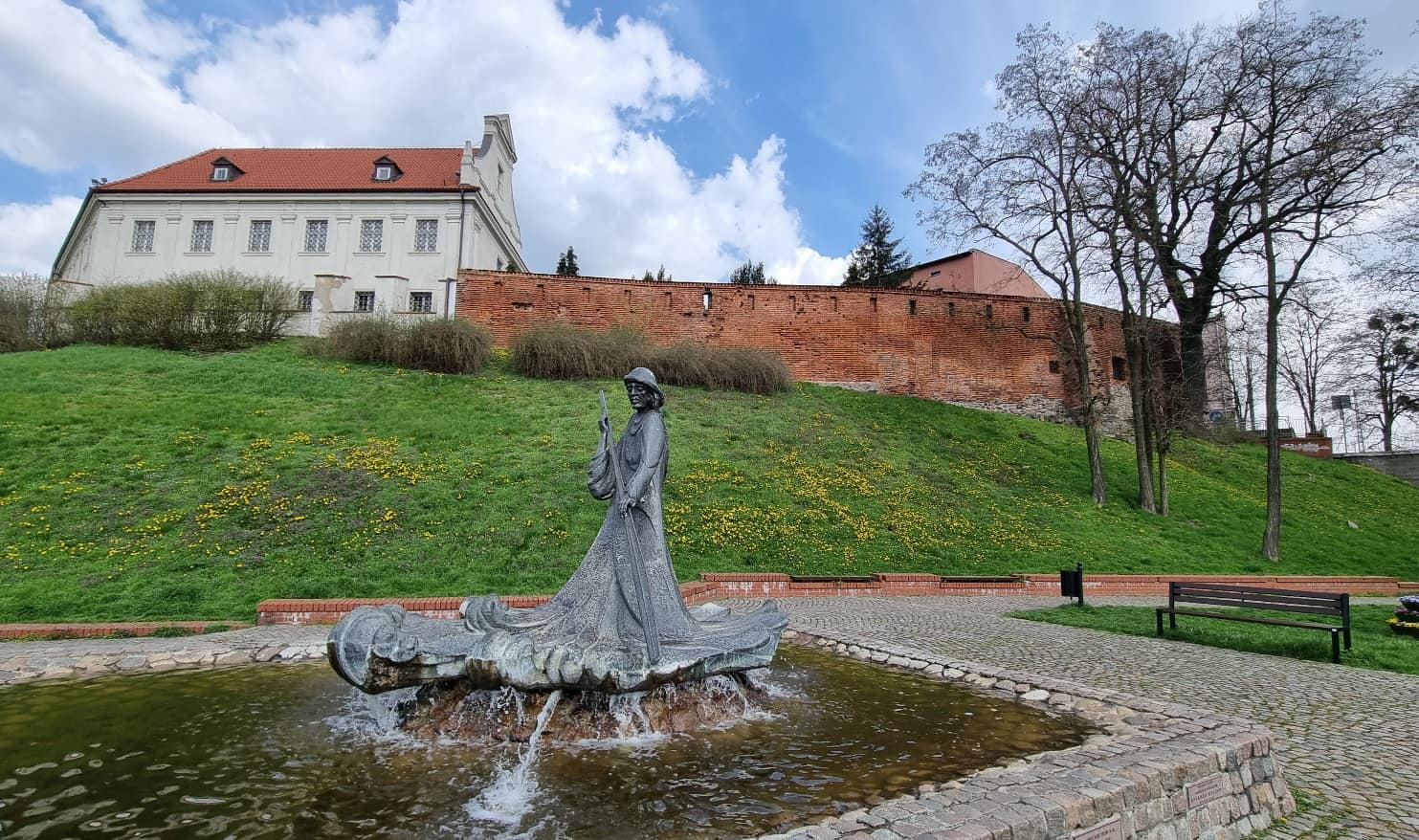
8. Street signs from various places with the inscription “ulica Grudziądzka”
Right by the statue of a raftsman, you won’t fail to notice the many street signs with the inscription “ulica Grudziądzka” (i.e. Grudziądz Street).
All in all, this spot by the street signs is very photogenic, especially with the defensive walls, river and statue of a raftsman well in view.
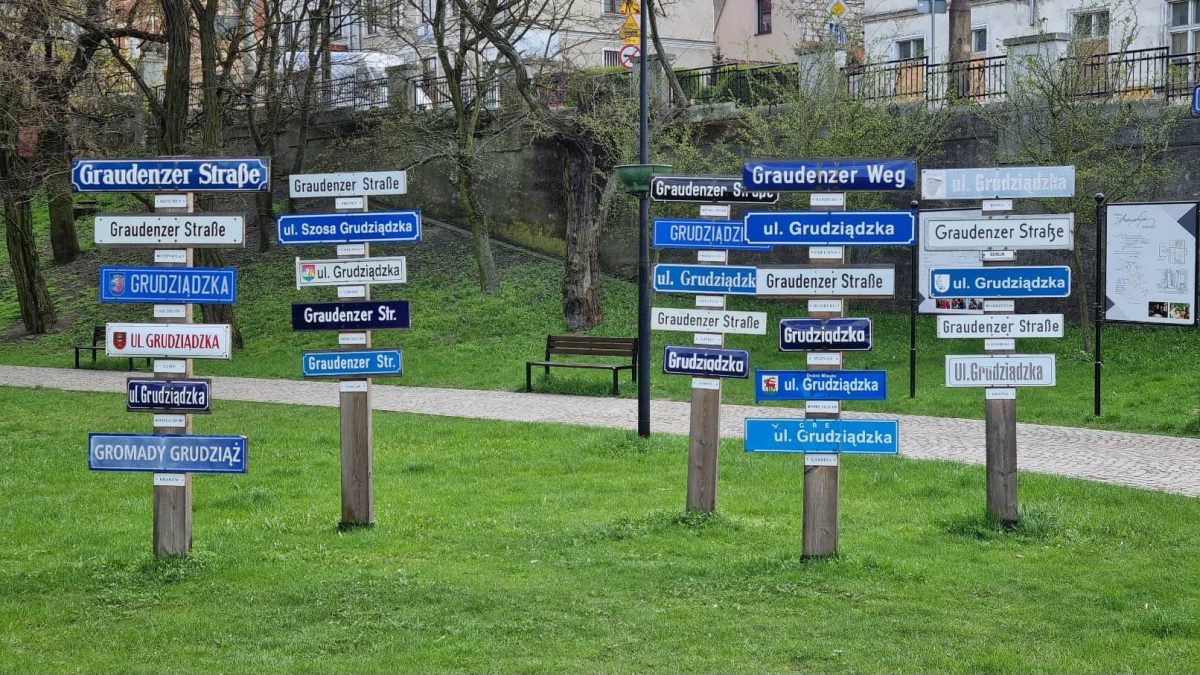
9. The General Gustaw Orlicz-Dreszer Embankment
The General Gustaw Orlicz-Dreszer Embankment is 100 metres or so from the Grudziądz street signs.
Admiring views of the Bronisław Malinowski Bridge (Most im. Bronisława Malinowskiego) along the way, we walked along the embankment to another bridge – Most zakochanych (i.e. Lovers’ Bridge). Head over Lovers’ Bridge and check out the area around Grudziądz Marina.
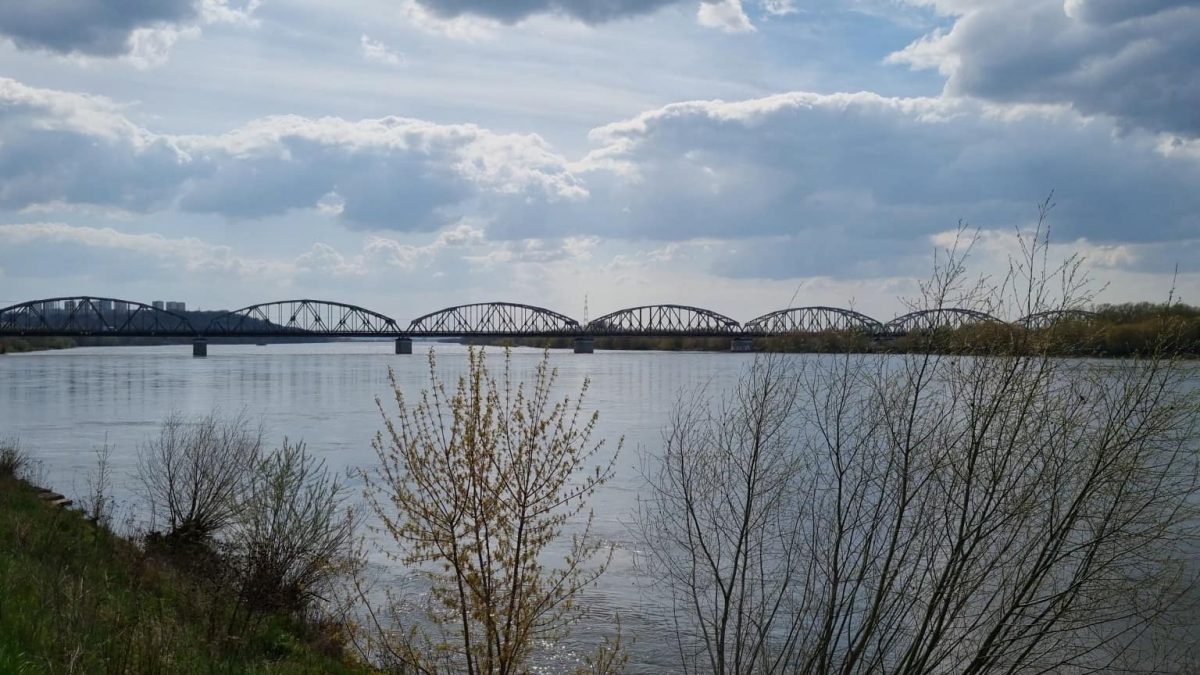
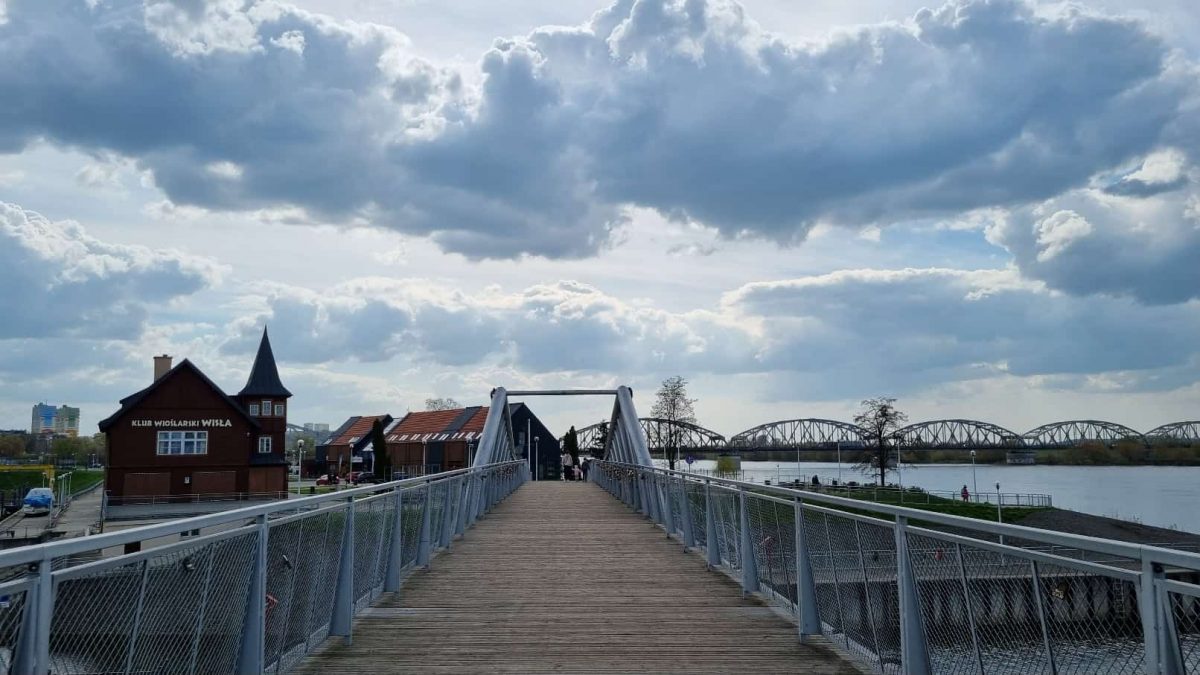
Final words on the top things to see in Grudziądz
In sum, I’ve covered the main sights in Grudziądz from my own personal experience.
There are plenty of other things to see and do which didn’t make it onto my list of the best attractions in Grudziądz. For example, St. Nicholas Church, the 18th-century Citadel and the Municipal Park (Park Miejski) could all have made it onto my list of the main sights in Grudziądz. Let’s not forget about The Grudziądz Museum as well.
Overall, I’ve described or at least mentioned the main sights in Grudziądz. When in Poland for a longer period of time, do visit this historic city. You won’t regret it.
Tourist Information:
Check out the website of the Tourist Information Centre in Grudziadz.
FAQ
You can take a direct train from Toruń to Grudziądz on trains operated by Arriva Group. The journey takes around 70-75 minutes.
There are no direct trains which run between Gdańsk and Grudziądz. You can catch a connecting train in Malbork.

